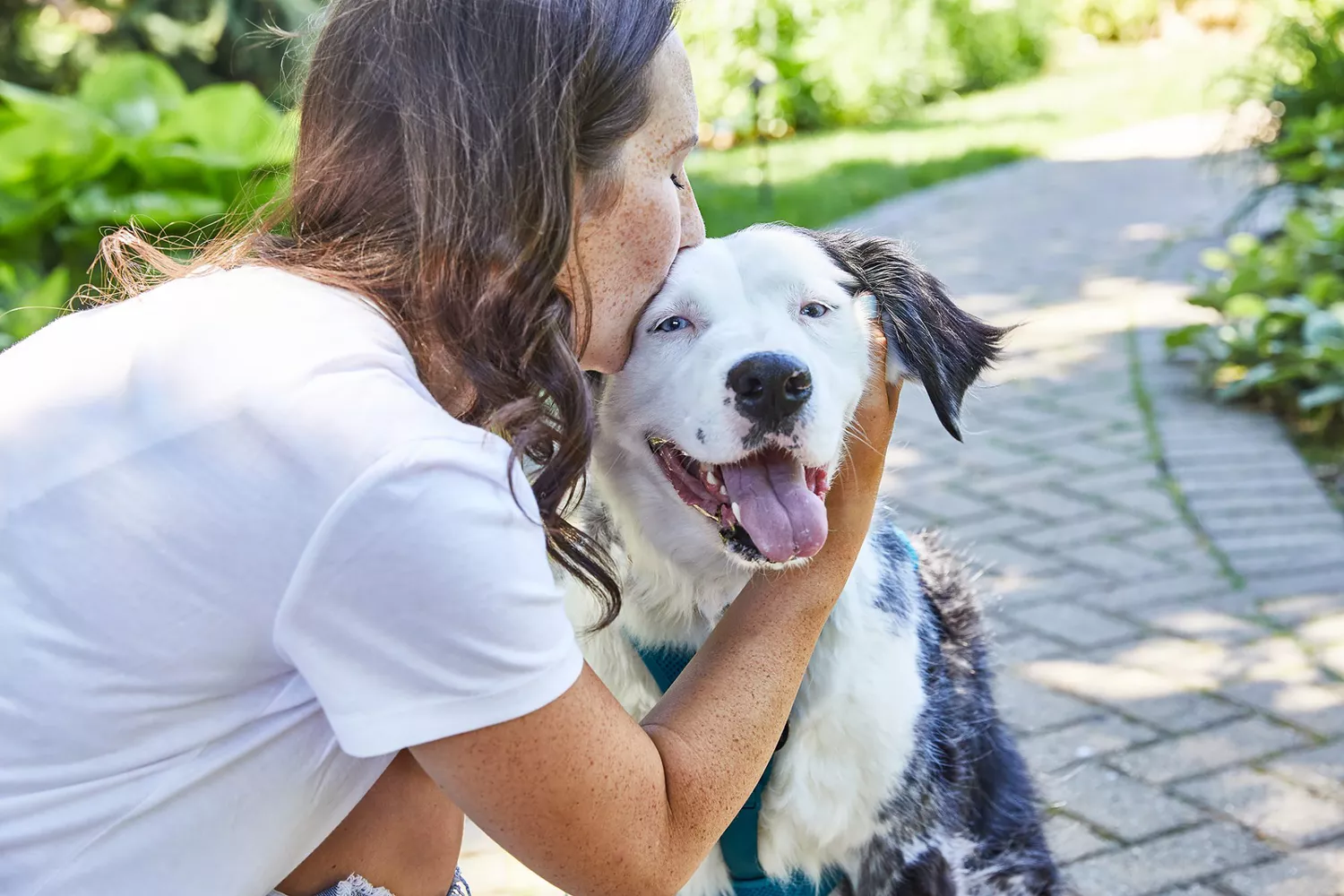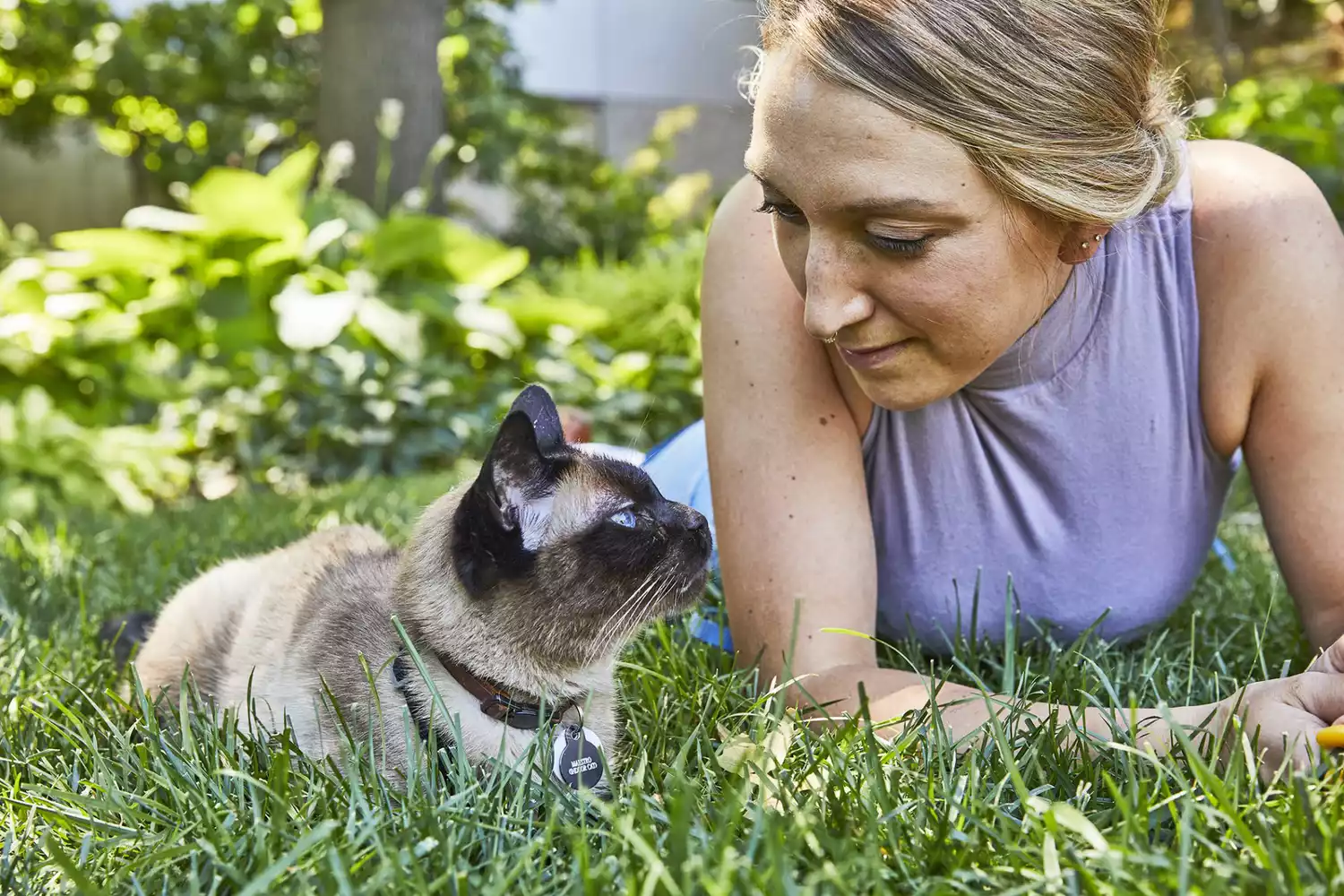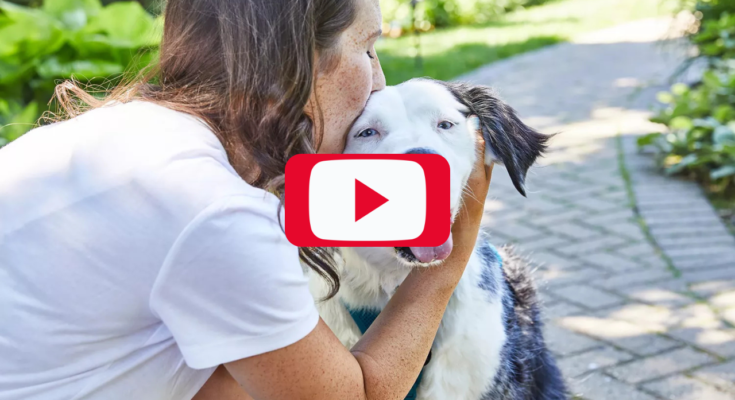Hearing that your four-legged friend has cancer is devastating. But it doesn’t necessarily mean it’s the end of your time together. Cancer in pets is unfortunately common, but it has become more treatable thanks to advances in research and treatment, meaning more quality time with your best furry companion.
According to the American Veterinary Medical Association, nearly half of all dogs over 10 years old develop cancer. The good news: Some cancers are curable and others are treatable, helping your pet feel better for longer.
A cancer diagnosis can fill you with worry and make you feel powerless. But there’s plenty you can do for your pet, and taking action is the best antidote for anxiety. Here are 12 steps to take to regain control of the situation and do what’s best for you and your pet.

1. Gather Information
The more you know about your pet’s medical situation, the better choices you can make moving forward. While the internet is chock-full of information, it’s hard to know what applies to your pet if you don’t have a medical background to sift through it all, Christine Swanson, DVM, DACVIM, a board-certified veterinary oncologist at BluePearl Pet Hospital in Grand Rapids, Mich., says.
There are numerous types of cancers with various characteristics. Some spread quickly, while others are slow-growing. And depending on the location, different types of cancers cause different symptoms.
A consultation with a veterinary oncologist is the first step in learning exactly what you’re dealing with and what treatment options are available. “Don’t be afraid to schedule a consultation even if you’re not sure you want to pursue treatment. It’s perfectly fine to collect information and then think about it,” Swanson says.
2. Understand Treatment Options
A lot of the same cancer treatments for people are also available for pets, including chemotherapy, radiation therapy, surgery, and immunotherapy.
“In veterinary medicine though, the treatments usually aren’t as aggressive,” Swanson says. “We adjust the therapy to avoid side effects like nausea, diarrhea, and immune suppression. We want pets to be able to live life as usual.”
The best treatment options depend on the type of cancer, its stage (how advanced it is), and its location. Before committing to a treatment plan, it’s important to ask your veterinarian the following:
Is this cancer curable? If the answer is yes, ask your veterinarian what it’ll take to cure your pet. If the answer is no, what is the goal of treatment? Is it to extend your pet’s life or provide a better quality of life in the remaining time?
What’s the median survival time? If you decide to do the treatments your veterinarian recommends, how much time will you likely gain with your pet? And, how will your pet feel while going through those treatments? If your vet recommends surgery, ask how your pet will be different afterward (for example, after amputation).
What’s the investment? What is the amount of time and money involved with treatment? And will you need to travel to see a specialist or to obtain treatment?
3. Consider Alternatives
When working with your vet on a treatment plan for your specific pet, there are some additional therapies outside of traditional cancer treatment. Many of these practices can help manage the symptoms of treatment, too. “Chemotherapy and radiation are effective, but they do come with their own set of concerns and side effects,” says Carolina Ikard, DVM, the founder of Luna Veterinary Care, a practice that specializes in holistic medicine, hospice, and end-of-life care, in Phoenix, Ariz.
Holistic veterinarians practice integrative medicine that combines both Western and Eastern approaches. Acupuncture, herbal remedies, and therapeutic nutrition can be additional ways to manage cancer and its symptoms. For example, Ikard says: “I’m currently treating a dog who has lymphoma with Chinese herbal medicine and supplements. His owner didn’t want to do chemotherapy and radiation because of the dog’s age and medical status. He was diagnosed four months ago and he’s doing fantastic. His lymph nodes have gotten smaller and he’s enjoying his walks.”
Results vary, but most alternative treatments are safe when used under veterinary supervision—even if they don’t have the desired effects. Search for veterinarians certified in veterinary acupuncture and herbal medicine through the International Veterinary Acupuncture Society (IVAS) or the Chi Institute.
What Is Holistic Vet Care? How an Integrated Approach to Your Pet’s Health Keeps Them Thriving
4. Assess Your Resources
After gathering information about your various options, it’s time to consider what’s reasonable for you and your family. Consider how much you can afford to spend and how much time you can devote to your pet’s care. “Cancer treatment is difficult emotionally, but it can also be hard logistically and financially. That all needs to be taken into account when coming up with the best treatment plan for your pet,” Swanson says.
5. Make a Plan With Your Vet
Thinking things through when your emotions are running high is difficult to do. That’s why Ikard recommends mapping out treatment goals and limits with your vet at the outset. “I care for sick pets for a living and when it comes to my own, I can be kind of a basket case sometimes because they’re my babies. So having a plan in place for what you’ll do when X, Y, or Z happens keeps you from having a knee-jerk reaction you might regret—especially on days your pet isn’t doing so well.”
Be clear with your vet about what matters most to you and what signs will indicate that it’s time to stop treatment or to consider euthanasia. “Don’t be afraid to set your limits as a pet owner,” Ikard says. “Tell your vet what you’re comfortable with and what you want to do. If you don’t want to do the recommended treatment, that’s OK.”
6. Talk to Friends and Family Members
Let your friends and family members support you during this difficult time. Knowing what you’re feeling will help them understand if you aren’t up for getting together. They may even be willing to stop in and check on your pet when you can’t be home, help with transporting your pet to and from treatment, or simply be a hand to hold or shoulder to cry on during this difficult time.
7. Adjust Your Home
You may need to change a few things around your home to keep your pet safe and comfortable, depending on your pet’s symptoms. For example, if your dog is having trouble walking on hardwood or tile, putting down rugs may help him gain traction and avoid falling. Or, pets that are in pain may need a cushier bed or one that has a heating element to stay warm and cozy. Ask your veterinarian for suggestions for your pet.
8. Maintain a Routine
If possible, stick to your normal routine. Pets, like people, gain a sense of security when things are familiar. Continue to go on walks, snuggle, and play. Sticking to your schedule will help ease stress for you and your pet.
9. Spend Extra Time Together

We often take the best things for granted. But a cancer diagnosis can shift your focus back to what matters most, like spending time with your furry loved one. Carve out extra time to do the activities that you and your pet enjoy together and take lots of pictures.
9 Valuable Lessons My Dog Taught Me in His Final Years
10. Consider Hospice Care
The purpose of veterinary hospice services is to provide end-of-life care that keeps pets comfortable and as pain-free as possible. For many pet parents, it’s the best choice for their family, and it helps them make the most of their pets’ remaining time. Some veterinarians, like Ikard, provide in-home hospice visits so pets with cancer don’t have to fuss with going into the clinic. Hospice care can:
Evaluate your pet’s comfort
Help your pet stay mobile
Provide medications to manage symptoms
Address your concerns
Let you know when your pet is nearing the end of their life
“The biggest benefit of hospice care is having the peace of mind that if something comes up, there’s someone you can call,” Ikard says. “If things take a turn with one of my patients, I can usually respond pretty quickly and assess the situation. Sometimes it’s a simple fix and other times, the animals are kind of telling you it’s their time to pass.”
11. Evaluate Your Pet’s Quality of Life
One of the most common questions veterinarians hear is: When should you consider euthanasia for a pet? Most experts look at the pet’s quality of life. Is your pet still feeling well enough to act like himself and enjoy life?
Swanson recommends picking four or five of your pet’s behaviors or personality traits that stand out to you. And then measuring your pet’s behavior against those. “For example, I have a Labrador that loves to eat,” she says. “If she didn’t want to eat that wouldn’t be normal for her. Also, every morning she gets up and visits with me while I’m getting ready. If she stopped doing that, it would be a big sign something is wrong.”
How to Know If Your Dog May Be Nearing the End of Their Life
12. Join a Support Group
Finding emotional support is really important and sometimes you don’t get that from your family or friends. But you can find it in communities of other pet parents. Swanson recommends asking your veterinarian about local support groups or connecting with like-minded people online in places like Facebook groups.



